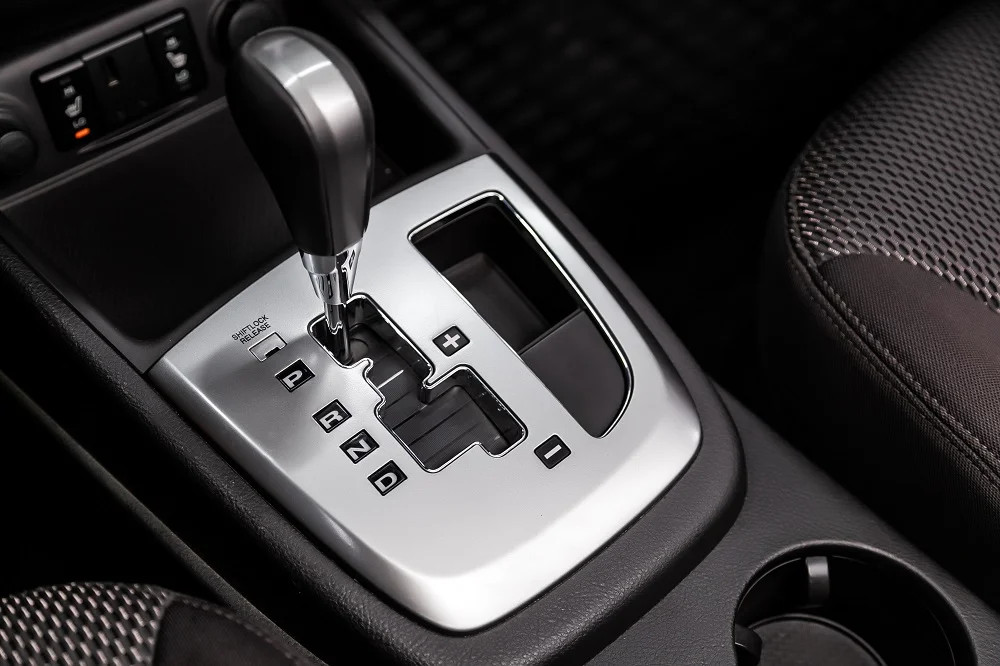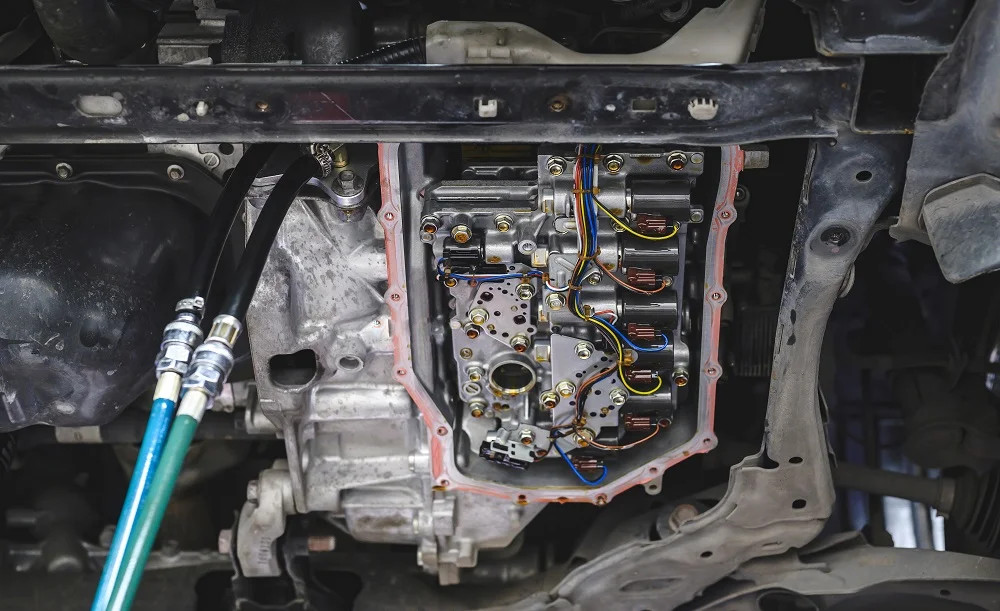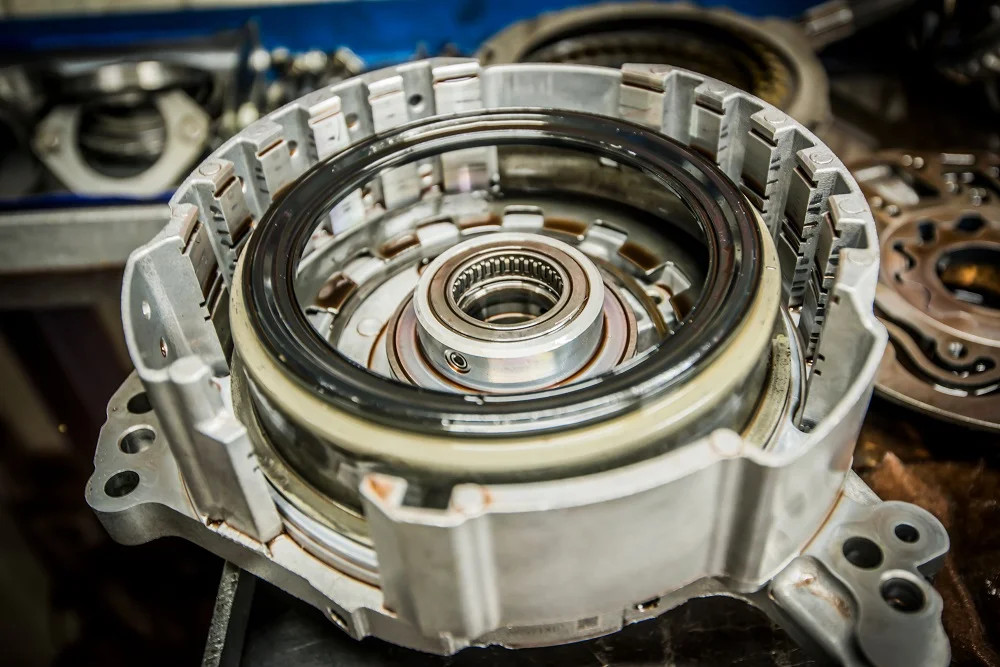

DTC P0715 Mercedes Benz: Input/Turbine Speed Sensor a Circuit Location
Table of Content
- 1. Understanding the P0715 Code on Mercedes Vehicles
- 1.1. Function of the Turbine Speed Sensor in Mercedes Transmissions
- 1.2. Location of the Input Turbine Speed Sensor in Mercedes-Benz
- 2. Common Causes of the P0715 Mercedes Code
- 2.1. Faulty Input/Turbine Speed Sensor
- 2.2. Wiring Issues
- 2.3. Connector Problems
- 2.4. Debris or Contamination
- 2.5. Damaged Reluctor Ring
- 2.6. Transmission Control Module (TCM) Failure
- 3. Common Symptoms Associated with the P0715 Code in Mercedes
- 3.1. Check Engine Light Illumination
- 3.2. Transmission Shifting Problems
- 3.3. Limp Mode Activation
- 3.4. Reduced Fuel Economy
- 3.5. Erratic Speedometer Readings
- 3.6. Stalling
- 4. Diagnosing the P0715 Mercedes Code: A Step-by-Step Guide
- 4.1. Initial Scan and Code Verification
- 4.2. Visual Inspection
- 4.3. Sensor Testing
- 4.4. Wiring Circuit Testing
- 4.5. Reluctor Ring Inspection
- 4.6. TCM Testing
- 5. Repairing the P0715 Mercedes Code: Solutions and Procedures
- 5.1. Replacing the Input/Turbine Speed Sensor
- 5.2. Repairing Wiring and Connectors
- 5.3. Cleaning or Replacing the Reluctor Ring
- 5.4. TCM Replacement (Rare)
- 6. Can You Drive a Mercedes with a P0715 Code?
- 7. The Importance of Using Genuine Mercedes Parts
- 8. AutoExplain.com: Your Partner in Mercedes-Benz Diagnostics and Repair
- 8.1. Benefits of AutoExplain.com Remote Support
- 8.2. Contact AutoExplain.com for Assistance
- 9. Additional Tips for Mercedes-Benz Transmission Maintenance
- 10. P0715 Mercedes Code: Frequently Asked Questions (FAQ)
The P0715 Mercedes code indicates an issue within the input or turbine speed sensor circuit, a critical component of your vehicle’s transmission system. AutoExplain.com offers expert guidance and remote support to help you diagnose and resolve this issue efficiently. Understanding the causes, symptoms, and diagnostic procedures associated with this code can save you time and money while ensuring the longevity of your Mercedes transmission, leading to improved vehicle performance and reliable transmission operation.
1. Understanding the P0715 Code on Mercedes Vehicles
The P0715 trouble code signifies “Input/Turbine Speed Sensor Circuit Malfunction”. This means the Powertrain Control Module (PCM) or Transmission Control Module (TCM) has detected an abnormal signal from the input or turbine speed sensor. In Mercedes-Benz vehicles, this sensor plays a vital role in monitoring the rotational speed of the transmission’s input shaft. This data is crucial for the TCM to determine shift timing and ensure smooth gear changes.
1.1. Function of the Turbine Speed Sensor in Mercedes Transmissions
The turbine speed sensor, also referred to as the input speed sensor, is essential for the proper operation of your Mercedes-Benz transmission. It monitors the speed of the transmission’s input shaft, providing critical data to the Transmission Control Module (TCM). This information enables the TCM to:
- Determine Optimal Shift Points: The TCM uses the input shaft speed along with other data to calculate the ideal time to shift gears, maximizing fuel efficiency and performance.
- Control Torque Converter Clutch (TCC): The TCC locks and unlocks to improve fuel economy at higher speeds. The turbine speed sensor helps the TCM manage the TCC engagement and disengagement.
- Ensure Smooth Gear Changes: By accurately monitoring input shaft speed, the TCM can adjust hydraulic pressure and other parameters to ensure seamless and comfortable gear shifts.
- Prevent Transmission Damage: If the input shaft speed is not within expected parameters, the TCM can take preventative measures, such as limiting engine power or preventing certain gear changes, to protect the transmission from damage.
 automatic transmission shifter
automatic transmission shifter
1.2. Location of the Input Turbine Speed Sensor in Mercedes-Benz
The input turbine speed sensor is typically located on the transmission housing, often near the front of the transmission. In some Mercedes models, it may be positioned internally, requiring removal of the transmission for access. Consult your vehicle’s repair manual or AutoExplain.com for specific location information.
2. Common Causes of the P0715 Mercedes Code
Several factors can trigger the P0715 code in Mercedes vehicles. Identifying the root cause is essential for effective repair. Here’s a breakdown of the most common culprits:
2.1. Faulty Input/Turbine Speed Sensor
The sensor itself may be defective due to age, wear, or internal damage. A failing sensor can send inaccurate or intermittent signals to the TCM, triggering the P0715 code.
2.2. Wiring Issues
Damaged, corroded, or loose wiring connecting the sensor to the TCM can disrupt the signal flow. This can include:
- Open circuits: A break in the wire prevents the signal from reaching the TCM.
- Short circuits: The wire is grounding out, sending an incorrect signal.
- High resistance: Corrosion or damage increases resistance in the wire, weakening the signal.
2.3. Connector Problems
The electrical connector at the sensor or TCM may be corroded, damaged, or loose, leading to poor electrical contact.
2.4. Debris or Contamination
Metallic debris or other contaminants within the transmission fluid can interfere with the sensor’s operation, causing inaccurate readings. Lack of regular transmission maintenance can contribute to this.
2.5. Damaged Reluctor Ring
The reluctor ring (also known as a tone wheel) is a toothed ring that rotates with the input shaft. The sensor reads the teeth as they pass by, generating a signal that represents the shaft speed. If the reluctor ring is damaged, the sensor will not be able to generate an accurate signal.
2.6. Transmission Control Module (TCM) Failure
In rare cases, the TCM itself may be faulty, misinterpreting the sensor signal or generating the P0715 code in error.
3. Common Symptoms Associated with the P0715 Code in Mercedes
The P0715 code can manifest in various symptoms, affecting your Mercedes’ performance and drivability. Be aware of the following:
3.1. Check Engine Light Illumination
The most obvious symptom is the activation of the check engine light on your dashboard. This indicates that the vehicle’s onboard diagnostic system has detected a problem.
3.2. Transmission Shifting Problems
You may experience erratic shifting, delayed gear changes, harsh shifting, or inability to shift into certain gears. The transmission might get stuck in one gear, or refuse to shift at all.
3.3. Limp Mode Activation
Many Mercedes vehicles will enter “limp mode” (also known as “fail-safe mode”) when the P0715 code is present. This limits engine power and speed to prevent further transmission damage.
3.4. Reduced Fuel Economy
Inefficient shifting and limp mode operation can lead to a noticeable decrease in fuel economy.
3.5. Erratic Speedometer Readings
In some cases, the speedometer may fluctuate erratically or provide inaccurate readings, as the input speed sensor data is sometimes used for speedometer calculations.
3.6. Stalling
The vehicle may stall, especially when coming to a stop. This is due to the transmission not downshifting properly.
4. Diagnosing the P0715 Mercedes Code: A Step-by-Step Guide
Diagnosing the P0715 code requires a systematic approach. Here’s a step-by-step guide to help you pinpoint the problem:
4.1. Initial Scan and Code Verification
- Connect an OBD-II scanner: Plug a compatible OBD-II scanner into the vehicle’s diagnostic port.
- Read Trouble Codes: Retrieve all stored trouble codes, including the P0715 code.
- Record and Clear Codes: Document all codes and then clear them from the system.
- Test Drive: Take the vehicle for a test drive to see if the P0715 code returns.
4.2. Visual Inspection
- Inspect Wiring: Visually inspect the wiring harness and connectors leading to the input/turbine speed sensor. Look for any signs of damage, corrosion, or loose connections.
- Check Sensor Condition: Examine the sensor itself for physical damage or contamination.
- Fluid Leaks: Check for any transmission fluid leaks near the sensor or transmission housing.
4.3. Sensor Testing
- Resistance Test: Use a multimeter to measure the resistance of the sensor. Compare the reading to the manufacturer’s specifications. An out-of-range reading indicates a faulty sensor.
- Signal Test (with oscilloscope): Use an oscilloscope to check the sensor’s signal output while the engine is running. Look for a clean, consistent waveform. An erratic or absent signal suggests a sensor problem.
4.4. Wiring Circuit Testing
- Continuity Test: Use a multimeter to check the continuity of the wires between the sensor and the TCM. This confirms that there are no open circuits.
- Voltage Test: Check for proper voltage at the sensor connector. This verifies that the sensor is receiving power.
- Short to Ground Test: Check for any shorts to ground in the wiring. This ensures that the signal is not being diverted to ground.
4.5. Reluctor Ring Inspection
- Visual Inspection: If possible, visually inspect the reluctor ring for damage or missing teeth. This may require removing the sensor or accessing the transmission internals.
4.6. TCM Testing
- Consult Repair Manual: Refer to the vehicle’s repair manual for specific TCM testing procedures.
- Professional Diagnosis: If you suspect a TCM issue, it’s best to seek professional diagnosis, as TCM testing often requires specialized equipment and knowledge.
 p0715 code indicating transmission damage
p0715 code indicating transmission damage
5. Repairing the P0715 Mercedes Code: Solutions and Procedures
Once you’ve diagnosed the cause of the P0715 code, you can proceed with the necessary repairs. Here are some common solutions:
5.1. Replacing the Input/Turbine Speed Sensor
If the sensor is found to be faulty, replacement is the most common solution.
- Disconnect Battery: Disconnect the negative battery cable before starting any electrical work.
- Locate Sensor: Identify the location of the input/turbine speed sensor on the transmission.
- Disconnect Connector: Disconnect the electrical connector from the sensor.
- Remove Sensor: Remove the sensor from the transmission housing.
- Install New Sensor: Install the new sensor, ensuring it is properly seated and tightened.
- Reconnect Connector: Reconnect the electrical connector to the sensor.
- Reconnect Battery: Reconnect the negative battery cable.
- Clear Codes: Clear the P0715 code from the system using an OBD-II scanner.
- Test Drive: Take the vehicle for a test drive to verify that the code does not return.
5.2. Repairing Wiring and Connectors
If damaged wiring or connectors are the cause, repair or replacement is necessary.
- Identify Damage: Locate the damaged section of wiring or the faulty connector.
- Repair Wiring: Repair damaged wiring by splicing in new wire or using wire connectors.
- Replace Connector: Replace damaged connectors with new ones.
- Secure Connections: Ensure all connections are clean, tight, and secure.
- Protect Wiring: Protect repaired wiring with electrical tape or heat shrink tubing.
- Test Circuit: Test the repaired circuit with a multimeter to verify proper operation.
- Clear Codes: Clear the P0715 code from the system using an OBD-II scanner.
- Test Drive: Take the vehicle for a test drive to verify that the code does not return.
5.3. Cleaning or Replacing the Reluctor Ring
If the reluctor ring is damaged or contaminated, cleaning or replacement may be required. This often involves removing the transmission for access.
- Remove Transmission: Remove the transmission from the vehicle.
- Access Reluctor Ring: Disassemble the transmission to access the reluctor ring.
- Clean Reluctor Ring: Clean the reluctor ring with a solvent to remove any contamination.
- Replace Reluctor Ring: If the reluctor ring is damaged, replace it with a new one.
- Reassemble Transmission: Reassemble the transmission.
- Reinstall Transmission: Reinstall the transmission in the vehicle.
- Refill Transmission Fluid: Refill the transmission with the correct type and amount of fluid.
- Clear Codes: Clear the P0715 code from the system using an OBD-II scanner.
- Test Drive: Take the vehicle for a test drive to verify that the code does not return.
5.4. TCM Replacement (Rare)
If the TCM is determined to be faulty, it will need to be replaced. This typically requires programming the new TCM to match the vehicle’s VIN and other specifications. This is best left to a qualified Mercedes-Benz technician.
6. Can You Drive a Mercedes with a P0715 Code?
Driving with a P0715 code is not recommended. The transmission may not shift properly, and the vehicle could enter limp mode, limiting speed and power. This can be dangerous, especially in traffic. Additionally, continuing to drive with the problem can cause further damage to the transmission.
 p0715 code causing transmission issues
p0715 code causing transmission issues
7. The Importance of Using Genuine Mercedes Parts
When repairing your Mercedes-Benz, it’s crucial to use genuine Mercedes parts or high-quality OEM (Original Equipment Manufacturer) alternatives. These parts are designed to meet the exact specifications of your vehicle, ensuring proper fit, performance, and reliability. While aftermarket parts may be cheaper, they often lack the quality and durability of genuine parts, which can lead to premature failure and further problems.
AutoExplain.com recommends using genuine Mercedes parts to ensure the longevity and optimal performance of your vehicle.
8. AutoExplain.com: Your Partner in Mercedes-Benz Diagnostics and Repair
Diagnosing and repairing complex automotive issues like the P0715 code can be challenging. AutoExplain.com offers expert remote diagnostic and programming services to help you resolve these problems quickly and efficiently.
8.1. Benefits of AutoExplain.com Remote Support
- Expert Technicians: Our team of experienced Mercedes-Benz technicians can provide accurate diagnoses and effective repair strategies.
- Remote Diagnostics: We can remotely access your vehicle’s diagnostic system to read trouble codes, monitor sensor data, and perform other diagnostic tests.
- Programming and Software Updates: We offer remote programming services for Mercedes-Benz vehicles, including TCM programming, software updates, and key programming.
- Cost-Effective Solutions: Our remote services can save you time and money compared to traditional repair shops.
- Convenient Support: Get the help you need from the comfort of your own garage.
8.2. Contact AutoExplain.com for Assistance
If you’re experiencing the P0715 code or any other issues with your Mercedes-Benz, don’t hesitate to contact AutoExplain.com. We’re here to help you get your vehicle back on the road quickly and safely.
- Address: 4590 Angus Road, New York, United States
- WhatsApp: (+84)967469410
- Email: [email protected]
- Website: AutoExplain.com
9. Additional Tips for Mercedes-Benz Transmission Maintenance
Preventive maintenance is key to avoiding transmission problems and extending the life of your Mercedes-Benz. Here are some additional tips:
- Regular Fluid Changes: Follow the manufacturer’s recommended transmission fluid change intervals.
- Use Correct Fluid: Always use the correct type of transmission fluid specified for your vehicle.
- Check Fluid Level: Periodically check the transmission fluid level and top it off as needed.
- Inspect for Leaks: Regularly inspect the transmission for any signs of leaks.
- Avoid Harsh Driving: Avoid harsh acceleration and braking, as this can put excessive strain on the transmission.
- Address Issues Promptly: Address any transmission problems promptly to prevent further damage.
10. P0715 Mercedes Code: Frequently Asked Questions (FAQ)
Here are some frequently asked questions about the P0715 code on Mercedes-Benz vehicles:
- What does the P0715 code mean on a Mercedes-Benz?
The P0715 code indicates a problem with the input/turbine speed sensor circuit in the transmission. The sensor is sending an irregular signal to the ECU or TCM. - What are the most common causes of the P0715 code in Mercedes vehicles?
Common causes include a faulty input/turbine speed sensor, damaged wiring, connector problems, debris or contamination, and a damaged reluctor ring. - What are the symptoms of the P0715 code in a Mercedes?
Symptoms can include a check engine light, transmission shifting problems, limp mode activation, reduced fuel economy, erratic speedometer readings, and stalling. - Can I drive my Mercedes with the P0715 code?
It is not recommended to drive with the P0715 code, as it can lead to further transmission damage and potentially dangerous driving conditions. - How do I diagnose the P0715 code on my Mercedes?
Diagnosis involves scanning for trouble codes, visual inspection of wiring and connectors, sensor testing with a multimeter or oscilloscope, and reluctor ring inspection. - Can I fix the P0715 code myself?
Depending on your mechanical skills and experience, you may be able to fix some of the simpler causes of the P0715 code, such as replacing a faulty sensor or repairing damaged wiring. However, more complex repairs, such as reluctor ring replacement or TCM programming, should be left to a qualified technician. - How much does it cost to fix the P0715 code on a Mercedes?
The cost of repair can vary depending on the cause of the problem and the labor rates in your area. Replacing a faulty sensor is typically the least expensive repair, while more complex repairs can cost several hundred dollars or more. - Where is the input/turbine speed sensor located on my Mercedes?
The location of the sensor can vary depending on the model and year of your Mercedes-Benz. It is typically located on the transmission housing, often near the front of the transmission. Consult your vehicle’s repair manual or AutoExplain.com for specific location information. - What is a reluctor ring, and what does it do?
The reluctor ring (also known as a tone wheel) is a toothed ring that rotates with the input shaft. The input/turbine speed sensor reads the teeth as they pass by, generating a signal that represents the shaft speed. - Can AutoExplain.com help me diagnose and repair the P0715 code on my Mercedes?
Yes, AutoExplain.com offers expert remote diagnostic and programming services to help you resolve the P0715 code quickly and efficiently. Contact us today for assistance.
By understanding the P0715 Mercedes code and following the diagnostic and repair procedures outlined in this guide, you can effectively address this issue and keep your Mercedes-Benz running smoothly. Remember to consult AutoExplain.com for expert assistance and reliable solutions.

65535 Audi Fault Code: Expert Solutions and Fixes
Audi A3 Trouble Code 00796: Diagnosis, Solutions, and Expert Insights
Audi DTC 16347:014 – Expert Diagnosis and Solutions

Josh William
Josh William is a seasoned automotive expert and technical writer at AutoExplain. With a background as an automotive technician, he brings hands-on experience and deep industry knowledge to his writing.



